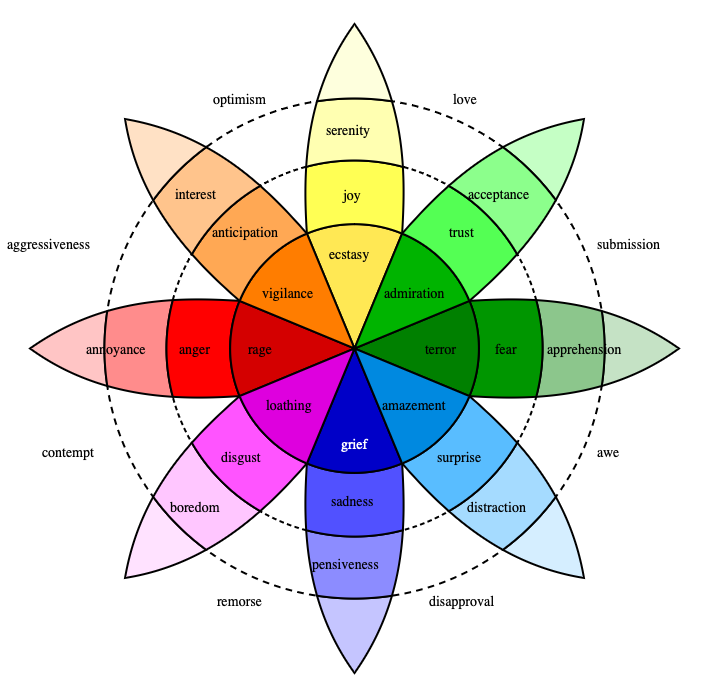Imagine a vibrant, multi-colored wheel, a kaleidoscope of emotions. This is Plutchik's Wheel of Emotions, a powerful tool designed by psychologist Robert Plutchik in 1981. It's not merely a beautiful piece of art, but a profound model that illustrates the complex world of human emotions.
Plutchik's Wheel is a circular diagram that represents eight primary emotions: joy, trust, fear, surprise, sadness, disgust, anger, and anticipation. Each emotion has a polar opposite—joy contrasts with sadness, trust with disgust, fear with anger, and surprise with anticipation. These primary emotions can combine to form secondary emotions, adding further depth and complexity to the model.
In his seminal paper, "Emotion: A Psychoevolutionary Synthesis," Plutchik discussed the importance of understanding emotions. He wrote, "Emotions are complex chains of events, beginning with a stimulus and ending with a feeling, a physiological response, and often an overt action."
Plutchik's Wheel of Emotions is a visual representation of this complexity and interconnectedness. It's a tool that helps us understand the "complex chains of events" that Plutchik referred to in his work.

Applying it to Emotional Intelligence
How can this wheel help me build my emotional intelligence? Well, the answer lies in the very structure of the wheel. By understanding and recognizing the various emotions represented on Plutchik's Wheel, you can gain a deeper insight into your emotional state and the emotional states of others. This understanding is the cornerstone of emotional intelligence.
For example, consider a situation where you're feeling a mix of emotions and you're trying to figure out why. You might feel a bit anxious, but there's also a hint of anticipation. By referring to Plutchik's Wheel, you can identify that what you're feeling is a mix of fear (anxiety) and anticipation—a secondary emotion known as 'aggressiveness'. This understanding can help you manage your emotions more effectively, enhancing your emotional intelligence.
Real-World Applications of Plutchik's Wheel
Imagine you're a manager at a tech company. One of your team members, usually a high performer, has been underperforming lately. Instead of jumping to conclusions, you use your understanding of Plutchik's Wheel to navigate the situation.
You notice signs of frustration (a secondary emotion derived from anger and disgust) in your team member. You recognize this emotion and its components because you're familiar with Plutchik's Wheel. You decide to have a conversation with the team member, addressing the issue with empathy and understanding. This approach helps resolve the issue and strengthens your relationship with your team member.
But remember, like any tool, Plutchik's Wheel is most effective when used regularly. Make it a habit to refer to the wheel whenever you're feeling a complex mix of emotions. Over time, you'll find that you're not only more in tune with your own emotions, but also better equipped to understand and empathize with the emotions of others.
